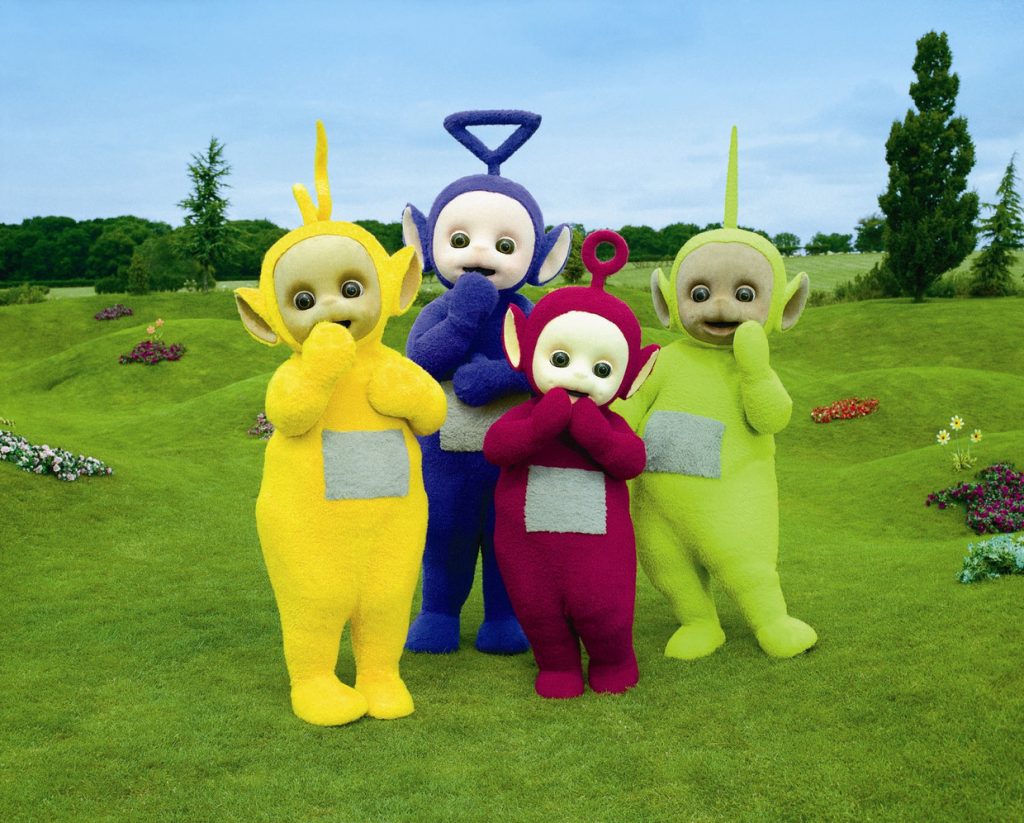The other day I found myself discussing the names of Teletubbies with a friend of mine, as one does on a relaxing Saturday evening. After discussing for several minutes, we both searched the web to see who was right and we came across something interesting.
Teletubbies apparently have genders, according to various sources. I had never thought about it before or never really realised it, and neither did my friend. Before I go any further into the topic, I am also curious about what the readers of this blog post think.
The answer is Po and Laa-laa. I personally still cannot see it. But why are most of the people able to assign genders to Teletubbies? How can we perceive gender in such creatures with gender ambiguity?
Possible Theories
The first theory that I will discuss is the correlation between body composition, size, and gender perception. This idea is tightly related to species’ sexual dimorphism. As defined in Britannica:
sexual dimorphism, the differences in appearance between males and females of the same species, such as in colour, shape, size, and structure, that are caused by the inheritance of one or the other sexual pattern in the genetic material.
Britannica, T. Editors of Encyclopaedia (2023, June 24). sexual dimorphism. Encyclopedia Britannica. https://www.britannica.com/science/sexual-dimorphism
The study by Holzleitner et al. (2014) suggests that humans perceive cues related to body height and weight as more masculine. Considering that Twinky Winky is the tallest Telletubby with a height of 10 feet and Dipsy is the second tallest with a height of 8 feet, the relative body size of Telletubbies might have contributed to how people perceive them in terms of their gender. Such a size difference can be seen in the photo below.

The second theory is on facial structures and characteristics. This is another way humans use to classify gender. Bruce et al. (1993) suggest that we characterise male faces as having a more protruding nose/brow and a more prominent chin/jaw. Humans can even assign genders to isolated facial parts (in descending order in terms of information carried) such as the brows & eyes, brows alone, eyes alone, the whole jaw, and the chin (Brown & Perrett, 1993). However, Teletubbies’ faces are nearly identical with the same facial structures which renders this approach useless.
The last theory is on voice and how it affects gender perception. Research suggests that humans rely on vocal cues such as timber and pitch to assign genders to a voice (Pernet & Belin, 2012). Timbre and pitch can be defined as “Pitch allows us to hear intonation in a language and notes in a melody. Timbre allows us to distinguish the vowels and consonants that makeup words, as well as the unique sound qualities of different musical instruments.” (Allen et al., 2017). All Teletubbies have different voice actors and the voice actors changed within the 25 years of airing.
Out of all the theories I have discussed, the last one might be the most plausible explanation of the gender perception of Teletubbies and my inability to agree with this claim. Growing up I watched the dubbed version of Teletubbies. In addition, I have never found it a relevant thing to think about my show, I still do not. Yet, it is an interesting phenomenon in how we perceive the world around us.
References
Allen, E. J., Burton, P. C., Olman, C. A., & Oxenham, A. J. (2017). Representations of Pitch and Timbre Variation in Human Auditory Cortex. The Journal of neuroscience : the official journal of the Society for Neuroscience, 37(5), 1284–1293. https://doi.org/10.1523/JNEUROSCI.2336-16.2016
Brown, E., & Perrett, D. I. (1993). What Gives a Face its Gender? Perception. https://doi.org/10.1068/p220829
Bruce, V., Burton, A. M., Hanna, E., Healey, P., Mason, O., Coombes, A., Fright, R., & Linney, A. (1993). Sex Discrimination: How Do We Tell the Difference between Male and Female Faces? Perception, 22(2), 131–152. https://doi.org/10.1068/p220131
Holzleitner, I. J., Hunter, D. W., Tiddeman, B. P., Seck, A., Re, D. E., & Perrett, D. I. (2014). Men’s Facial Masculinity: When (Body) Size Matters. Perception, 43(11), 1191–1202. https://doi.org/10.1068/p7673
Pernet, C., & Belin, P. (2012). The Role of Pitch and Timbre in Voice Gender Categorization. Frontiers in Psychology, 3. https://www.frontiersin.org/articles/10.3389/fpsyg.2012.00023
Sexual dimorphism | Definition, Examples, & Facts | Britannica. (2023, September 5). https://www.britannica.com/science/sexual-dimorphism


I did not expect myself to ever think about the gender identity of the TeleTubbies, but here I am! This post was really insightful in its discussion of the different aspects of gender perception. Personally, I also watched the dubbed version of the Teletubbies, and the only voice I can remember is Laa-Laa, which was distinctly high-pitched and softer, and Poo, which just sounded child-like to me. Nevertheless, it is an interesting case study!
Wow, I think I lived a different life compared to others! I found it so self-evident that Laa-Laa and Poo were the two female Teletubbies! Very interesting to read people never really considered gender. Actually, I do kind of see a difference in the faces; to me Tinky Winky and Dipsy’s faces look wider and those of Laa-Laa and Poo look more egg-shaped, but maybe that is just me?